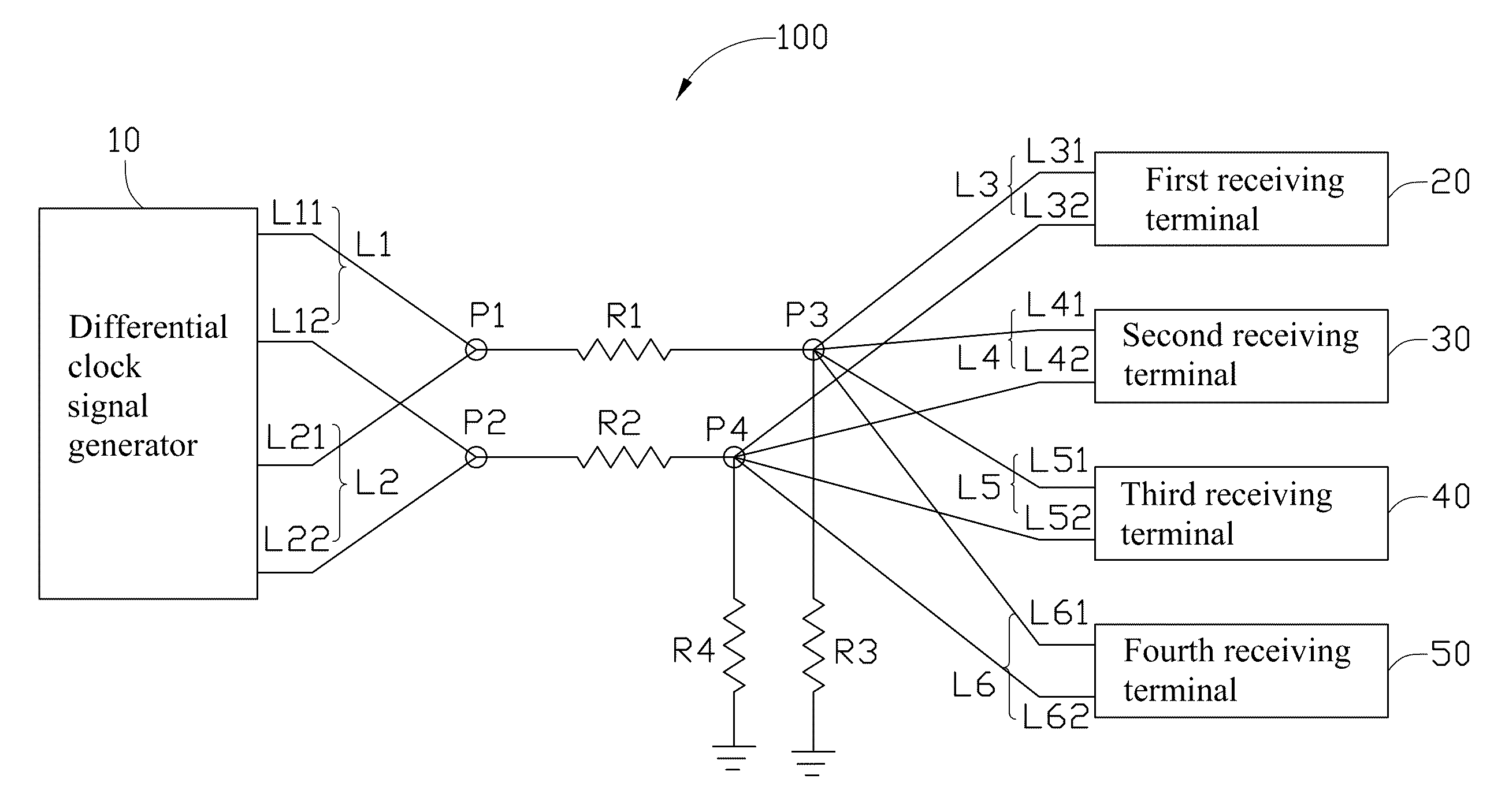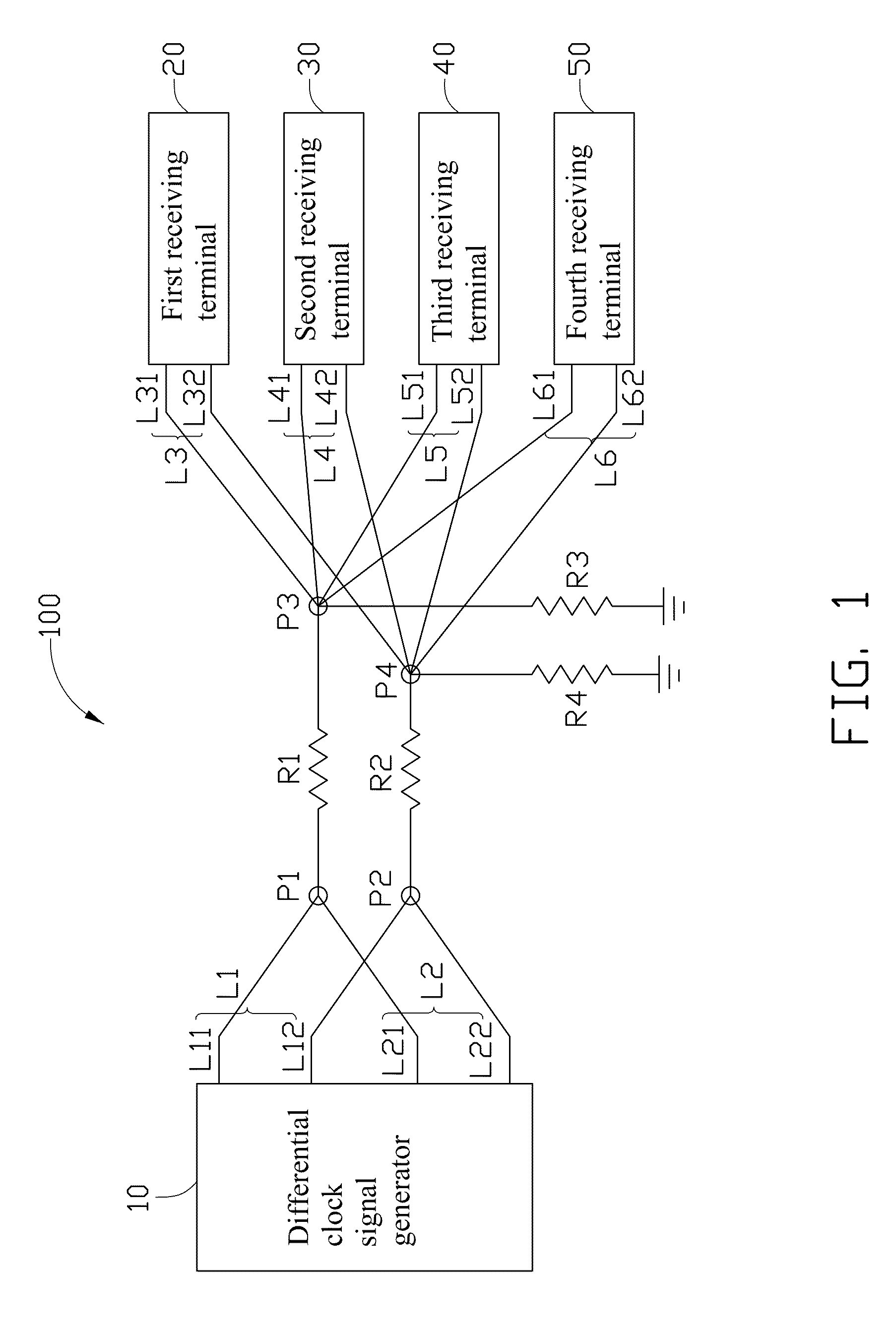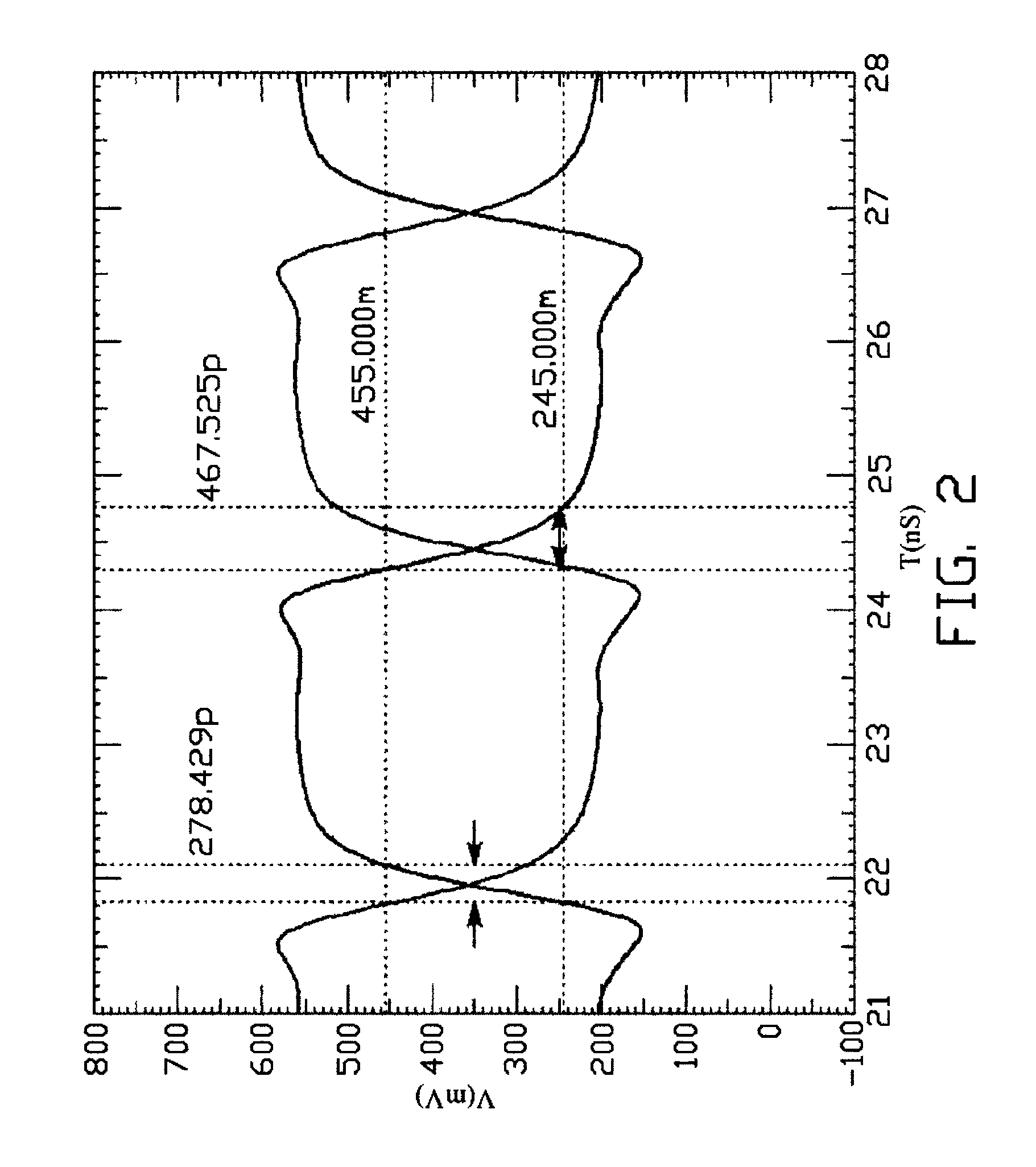Differential signal transmission device
a transmission device and signal technology, applied in the direction of waveguide type devices, digital transmission, multiple-port networks, etc., can solve the problems of unsatisfactory specification and low voltage at the receiving terminal
- Summary
- Abstract
- Description
- Claims
- Application Information
AI Technical Summary
Benefits of technology
Problems solved by technology
Method used
Image
Examples
Embodiment Construction
[0007]Referring to FIG. 1, an exemplary embodiment of a differential signal transmission device 100 includes a differential clock signal generator 10, a first receiving terminal 20, a second receiving terminal 30, a third receiving terminal 40, a fourth receiving terminal 50, two matching resistors R1 and R2, and two grounding resistors R3 and R4. The differential signal transmission device 100 may be formed on a printed circuit board.
[0008]The differential clock signal generator 10 provides two differential clock signal pairs L1 and L2. The differential clock signal pair L1 includes a positive signal L11 and a negative signal L12. The differential clock signal pair L2 includes a positive signal L21 and a negative signal L22. The positive signals L11 and L21 are clustered at a first positive clustering point P1. The negative signals L12 and L22 are clustered at a first negative clustering point P2.
[0009]The first positive clustering point P1 is connected to a second positive cluster...
PUM
 Login to View More
Login to View More Abstract
Description
Claims
Application Information
 Login to View More
Login to View More - R&D
- Intellectual Property
- Life Sciences
- Materials
- Tech Scout
- Unparalleled Data Quality
- Higher Quality Content
- 60% Fewer Hallucinations
Browse by: Latest US Patents, China's latest patents, Technical Efficacy Thesaurus, Application Domain, Technology Topic, Popular Technical Reports.
© 2025 PatSnap. All rights reserved.Legal|Privacy policy|Modern Slavery Act Transparency Statement|Sitemap|About US| Contact US: help@patsnap.com



